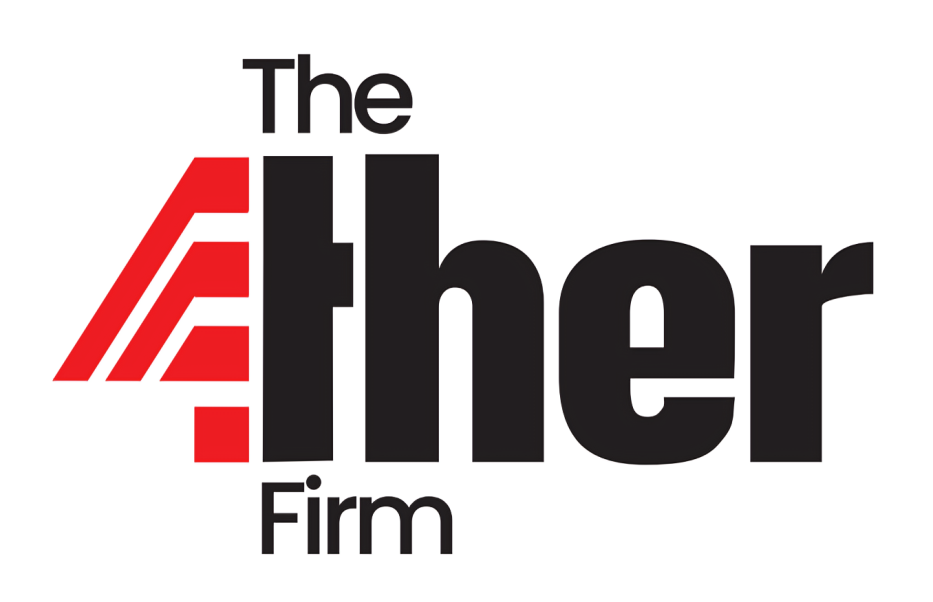
Most African organizations treat research as an academic exercise—something required for grant applications or program evaluations but disconnected from strategic decision-making. This perspective represents one of the most significant missed opportunities in the development sector today.
Strategic research, when properly designed and executed, serves as both a program improvement tool and a competitive advantage that attracts funders, informs partnerships, and positions organizations as thought leaders in their sectors. Through our research work across diverse African contexts, our team has discovered that organizations using research strategically achieve funding success rates 400% higher than those relying solely on program implementation experience.
The difference lies not in the sophistication of research methodologies, but in understanding how to design research that answers questions funders care about while generating insights that improve program effectiveness.
The Strategic Research Revolution
Traditional development research focuses on proving program success after implementation. Strategic research shapes program design before implementation, identifies market opportunities, and creates evidence that attracts investment rather than just justifying expenditure.
Traditional Research Approach:
- Evaluate program effectiveness after completion
- Focus on internal organizational learning
- Measure activities and outputs
- Report findings to existing stakeholders
- Justify resources already spent
Strategic Research Approach:
- Identify opportunities and challenges before program design
- Generate insights that attract new stakeholders and funding
- Understand systems and market dynamics that affect program success
- Position organization as sector expert and thought leader
- Inform resource allocation decisions and strategic positioning
Research Areas That Create Strategic Value
Not all research questions have equal strategic value. Organizations with limited research capacity must prioritize investigations that provide both programmatic insights and competitive positioning advantages.
Access to Finance Research
Strategic Value: Understanding how different populations access financial services reveals opportunities for intervention while demonstrating market knowledge that attracts both funders and private sector partners.
Key Questions:
- What informal financial mechanisms do communities currently use, and how could formal services complement rather than replace them?
- Which demographic groups face the greatest barriers to financial inclusion, and what are the specific obstacles they encounter?
- How do cultural, regulatory, and technological factors interact to create or prevent financial access in specific contexts?
Application: Organizations conducting rigorous access to finance research position themselves as credible partners for financial inclusion initiatives while identifying specific intervention opportunities that address real rather than assumed barriers.
Funding Advantage: This research attracts support from financial inclusion funders, impact investors, and private sector partners seeking to understand African markets.
Private Sector Engagement Research
Strategic Value: Understanding how private sector actors operate in development contexts enables organizations to design more effective partnerships while demonstrating business acumen that attracts commercially-oriented funders.
Key Questions:
- What incentives motivate private sector engagement in social impact initiatives within specific sectors and geographies?
- Which partnership models create genuine value for both private and social sector partners?
- How do regulatory environments, market structures, and cultural factors affect private sector willingness to engage in development initiatives?
Application: Organizations with deep private sector research become preferred partners for blended finance initiatives, corporate social responsibility programs, and public-private partnerships.
Competitive Advantage: This knowledge enables organizations to structure partnerships that create mutual value rather than extractive relationships.
Policy and Governance Research
Strategic Value: Understanding policy environments and governance dynamics enables organizations to design interventions that work within existing systems while informing advocacy strategies that attract policy-focused funders.
Key Questions:
- How do formal policies interact with informal governance structures in specific contexts?
- Which policy gaps create barriers to program effectiveness, and what evidence would support policy change?
- How do different stakeholders influence policy implementation at various levels of government?
Application: Organizations conducting policy research position themselves as credible advocacy partners while designing programs that complement rather than conflict with existing governance structures.
Strategic Positioning: This research attracts support from governance-focused funders, policy advocacy organizations, and government partners seeking evidence-based policy development.
Market Systems Research
Strategic Value: Understanding how markets function in specific contexts enables organizations to design interventions that strengthen rather than distort market systems while attracting market systems development funders.
Key Questions:
- Which market failures prevent desired outcomes from occurring naturally?
- How do power dynamics, information asymmetries, and institutional factors affect market function?
- What interventions could catalyze market changes that persist beyond program implementation?
Application: Organizations with market systems expertise design interventions that create sustainable change rather than temporary improvements while attracting funders interested in systemic impact.
Research Design for Strategic Impact
Effective strategic research requires different design approaches than traditional program evaluation or academic research:
Start with Strategic Questions, Not Academic Interests
Framework: Begin by identifying the strategic decisions your organization needs to make or the positioning advantages you want to develop, then design research to inform those priorities.
Example: Instead of researching “barriers to girls’ education,” investigate “which specific interventions create lasting increases in girls’ educational completion while strengthening rather than bypassing existing community education systems.”
Design for Multiple Audiences
Stakeholder Mapping: Identify all potential audiences for research findings—internal leadership, current funders, prospective funders, government partners, private sector collaborators, and peer organizations.
Communication Strategy: Design research outputs that serve multiple audiences simultaneously. Executive summaries for funders, policy briefs for government partners, and detailed methodological reports for academic credibility.
Build in Real-Time Learning
Iterative Design: Structure research to provide insights during implementation rather than only at completion. This allows course corrections and demonstrates adaptive management capacity to stakeholders.
Feedback Loops: Create mechanisms for research findings to immediately inform program adjustments, showing stakeholders that research generates practical value rather than just reports.
Focus on Systems Understanding
Context Mapping: Investigate how different factors interact to create current conditions rather than isolating individual variables. This systems perspective attracts funders interested in sustainable change.
Leverage Points: Identify specific intervention opportunities where modest inputs could create disproportionate positive changes. This approach attracts funders seeking high-impact investments.
Research Methodologies for Resource-Constrained Organizations
Strategic research doesn’t require large budgets or extensive academic partnerships. Organizations can generate valuable insights through focused, well-designed studies that leverage existing relationships and local expertise.
Community-Based Participatory Research
Approach: Engage community members as co-researchers rather than just research subjects. This approach generates better data while building local research capacity and demonstrating commitment to locally-led development.
Resource Efficiency: Uses existing community relationships and local knowledge to reduce research costs while improving data quality and community ownership of findings.
Strategic Value: Demonstrates authentic community partnership to funders prioritizing locally-led development while generating insights that reflect community perspectives rather than external assumptions.
Mixed-Methods Market Research
Approach: Combine quantitative surveys with qualitative interviews and focus groups to understand both what is happening and why it’s happening in specific contexts.
Focus Areas: Market dynamics, stakeholder relationships, policy implementation, and intervention effectiveness from multiple perspectives.
Strategic Application: Provides comprehensive understanding of operating environments that enables more effective program design while demonstrating research rigor to evidence-focused funders.
Rapid Assessment Techniques
Approach: Use structured observation, key informant interviews, and document analysis to quickly understand complex situations without extensive resource investment.
Timeline: Generate actionable insights within 2-4 weeks rather than months or years required for traditional research approaches.
Strategic Use: Rapidly assess new market opportunities, partnership prospects, or policy environments before making significant resource commitments.
Turning Research into Competitive Advantage
The most successful organizations use research findings to establish thought leadership, attract strategic partnerships, and inform funding strategies rather than just improving current programs.
Thought Leadership Development
Publication Strategy: Share research findings through multiple channels—organizational reports, peer-reviewed publications, policy briefs, conference presentations, and media engagement.
Positioning: Become the go-to source for insights about specific populations, sectors, or intervention approaches rather than just another service provider.
Network Building: Use research findings to initiate conversations with potential funders, partners, and collaborators who share interest in similar questions or populations.
Evidence-Based Positioning
Competitive Differentiation: Use research insights to articulate unique value propositions based on deep understanding of context rather than generic service offerings.
Funder Communication: Lead funding conversations with insights about challenges and opportunities rather than requests for support, positioning the organization as a strategic partner rather than a grant recipient.
Partnership Development: Use research findings to identify potential collaborators and structure partnerships based on complementary expertise rather than overlapping services.
Program Innovation
Intervention Design: Use research insights to design programs that address root causes rather than symptoms, creating more sustainable impact while attracting funders interested in systemic change.
Risk Mitigation: Use research to identify potential implementation challenges before they become program failures, demonstrating due diligence that builds funder confidence.
Scaling Strategies: Use research to understand which program elements are context-specific versus transferable, enabling effective scaling approaches that attract growth-oriented funders.
Measuring Research ROI
Strategic research should generate measurable returns through improved program effectiveness, enhanced funding success, and strengthened organizational positioning.
Funding Success Metrics: Track changes in funding application success rates, average grant sizes, and funder relationship development following research publication.
Partnership Development: Monitor new partnership opportunities, speaking invitations, and collaboration proposals that result from research visibility.
Program Effectiveness: Measure improvements in program outcomes that result from research-informed design changes compared to previous approaches.
Organizational Positioning: Track media mentions, conference invitations, and sector leadership opportunities that demonstrate enhanced organizational credibility.
The Research-Strategy Integration
Organizations that successfully use research strategically don’t treat it as a separate activity but integrate research thinking into all strategic planning, program design, and stakeholder engagement activities.
This means building organizational cultures that value evidence-based decision making, investing in staff research capabilities, and designing programs that generate learning while delivering services.
Most importantly, it means understanding that in today’s competitive funding environment, organizations that can demonstrate deep understanding of their operating contexts and intervention approaches will consistently outperform those relying solely on good intentions and past experience.
In our next post, our team will explore the art and science of stakeholder mapping and relationship building, including strategies for identifying hidden influencers, building authentic partnerships, and maintaining strategic relationships that support long-term organizational growth and impact.
Ready to leverage research for strategic advantage? The 4ther Firm’s Research services help organizations design and conduct studies that inform program development while positioning them as sector thought leaders. Our clients use research insights to attract strategic funding, build valuable partnerships, and design interventions that create lasting impact.
Contact our team to explore how strategic research can strengthen your organization’s competitive positioning while generating the evidence needed to attract investment and build sustainable programs.
